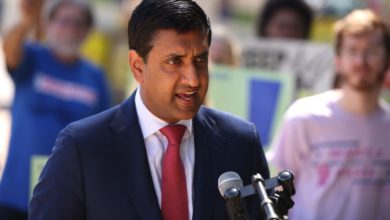Bisexual Pride Flag History: Where It Originated

Parades of flags are a regular feature of Pride Month marches. The rainbow flag, designed in the 1970s by Gilbert Baker, is best-known, and while it’s embraced by the LGBTQ community, there are also flags that people of certain gender identities rally around. One of those flags is the bisexuality Pride Flag.
Michael Page was bisexuality activist and designed the flag in 1998. The flag consists of three layers of color: one layer is fuchsia for females, another layer of royalblue at the bottom representing males and a middle stripe of lavender or purple to indicate attraction.
“I feel like it’s all shades of my sexuality; like I am attracted to women; I am attracted to men; and I am attracted to people without thinking about what their gender is,” says Wendy Curry, 55, former President of BiNet USA, an organization promoting bisexuality awareness, who helped promote the flag in the late ‘90s. “But I think the idea that there’s more than one color to our sexuality is reflected in the flag and I love that.”
Gallup polls in 2021 found that over half (54.6%) of LGBT adults are bisexual.
The flag was part of an effort to start an annual Bisexuality Visibility Day—or Bi Day for short—which, the bisexual community began marking every Sept. 23 starting in 1999. This flag came in a period when activists worked to unite the bisexual community through online chatrooms. Bisexuality pride flag was viewed as one method to create a network of bisexuals.
As Curry recalls the rationale for a flag back then, “We need something so that when we go to a pride parade, people know that it’s us, and we’re not hidden.”
Fellow BiNet board member and activist Gigi Wilbur, 66, who also helped promote the flag in the 90s, saw the flag as a bold statement in the era of “Don’t Ask, Don’t Tell.” The topic of gays and lesbians serving in the military was a hot-button political issue at the time, and he saw the flag as flying in the face of that policy—and making sure bisexual people were included in those conversations. “And so I think part of that was what motivated this to become more visible and say, ‘Yes, we do exist and we should have the same rights as everybody else,’” Wilbur says.
The awareness day and flag were created to connect people looking to find this kind of community.
“I think there are many rural communities where people have feelings about being bi but think, ‘Oh, am I the only one?’” says Wilbur. He hopes bisexual people will see the flag in pride parade coverage and think, “’I’m not alone.’”
Read More From Time





